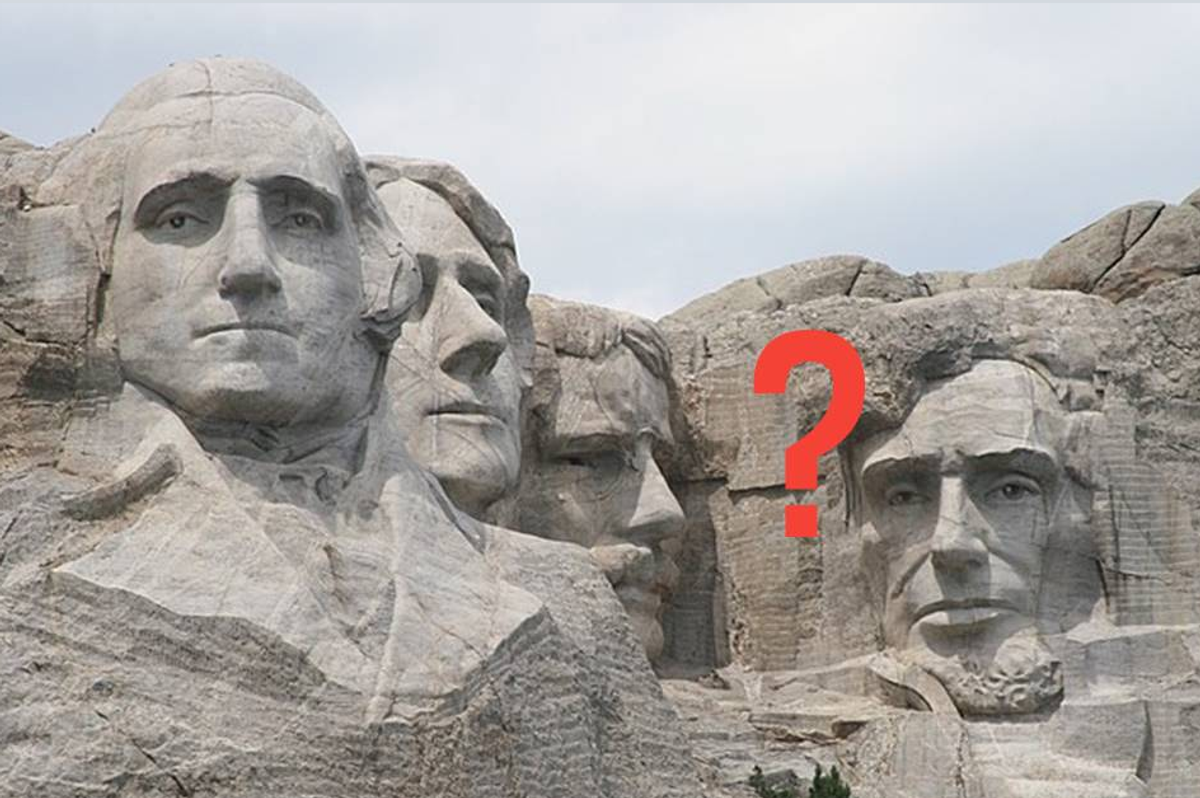People are shared the one American non-president they’d add to Mount Rushmore
Who would you choose?

Mount Rushmore National Memorial in South Dakota.
Sculptor Gutzon Borglum designed the Mount Rushmore National Memorial and oversaw the project's execution from 1927 to 1941. The sculptor also chose the four presidents who are carved into granite on the mountain’s face. He selected the four presidents to represent the nation's birth (George Washington), growth (Thomas Jefferson), development (Theodore Roosevelt) and preservation (Abraham Lincoln).
Since the faces on Mount Rushmore were first chiseled into granite there have been debates over which presidents also deserve to be on the monument. Two years ago, then-President Donald Trump floated the idea that he deserved to have his face carved in granite.
A Reddit user posed an interesting question to the online forum about the famous monument and it sparked a great conversation. “You get to add another American to Mt. Rushmore but it can’t be a president. Who do you choose?”
That’s a tough question to answer but a fun one to ponder. What criteria does one use to choose the greatest American that ever lived who wasn’t a president? More than 545 million people have lived in the country over the past 244 years. How do we choose one?
Do you select someone from the world of sports, science, the arts, literature, civil rights, religion, military or healthcare? What about someone who performed a heroic deed?
To rank the responses on the Reddit post, I looked at the number of upvotes each suggestion received and then ranked them. It’s not the most scientific way of doing things but it gives us a pretty good idea about who people think should make it to the monument.
Here are the top 20 most popular responses to the burning question: “Which non-president should be added to Mount Rushmore?”
1.
"Dr. Jonas Salk. Saved us all from polio." — Barefoot_Alvin
2.
"There is already a non-president on Mt. Rushmore. John Cena." — zoqforpik
The Reddit user is clearly referencing the wrestler's catchphrase.
3.
"Dolly Parton." — Airos42
4.
"Mr. Rogers." — PitchforkJoe
5.
"Mark Twain. The quintessential American writer. We always put up statues of military and politicians across this country. It would be nice to see more of our creative side get honored. Put up Poe on the mountain. Attract goths to the site." — inksmudgedhands
6.
"Martin Luther King Jr." — bahamuto
7.
"How is Nicolas Cage not here yet?" — deus_vult
8.
"John Wilkes Booth but he's further back behind Lincoln." — Jakovosol0
9.
"Benjamin Franklin." — FinnbarMcBride
10.
"Sacagawea." — bivalve_connisseur
11.
"Homer Simpson." — EonClaw
12.
"Bob Ross." — j-oats
13.
"Weird Al." — OntarioLakeside
14.
"Frederick Douglass." — kade22
15.
"Betty White." — Diatrial
16.
The person who started the thread chimed in with their nominee.
"Neil Armstrong would be my number one." — taint_licking_clown
17.
"Harriet Tubman." — 44cksSake
18.
"Ronnie James Dio!" — kevinthegeek21
19.
"Maria Darlene Pearson or Hai-Mecha Eunka (lit. 'Running Moccasins') (July 12, 1932 – May 23, 2003) was an activist who successfully challenged the legal treatment of Native American human remains. A member of the Turtle Clan of the Yankton Sioux which is a federally recognized tribe of Yankton Dakota, she was one of the primary catalysts for the creation of the Native American Graves Protection and Repatriation Act (NAGPRA). Her actions led to her being called 'the Founding Mother of the modern Indian repatriation movement' and 'the Rosa Parks of NAGPRA." — CTeam19
20.
"Danny DeVito." — distantshadow





 Why so serious? Public domain
Why so serious? Public domain "Mona Lisa" by Leonardo da Vinci, painted in 1503Public domain
"Mona Lisa" by Leonardo da Vinci, painted in 1503Public domain "Malle Babbe" by Frans Hals, sometime between 1640 and 1646Public domain
"Malle Babbe" by Frans Hals, sometime between 1640 and 1646Public domain Even wedding party photos didn't appear to be joyful occasions.
Even wedding party photos didn't appear to be joyful occasions. A mother takes a photo of her child for her Instagram feed. via
A mother takes a photo of her child for her Instagram feed. via  A woman who is very bored.
A woman who is very bored. A man who is very bored.
A man who is very bored.